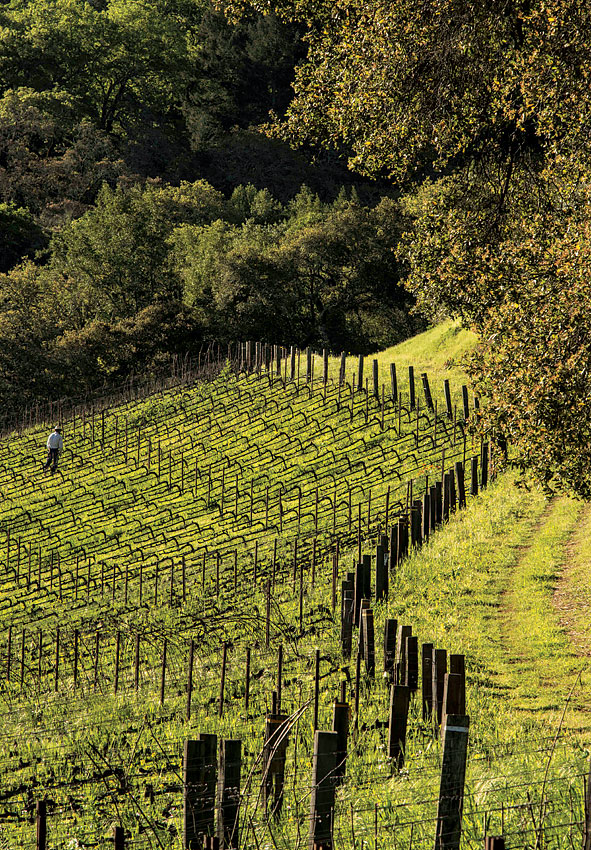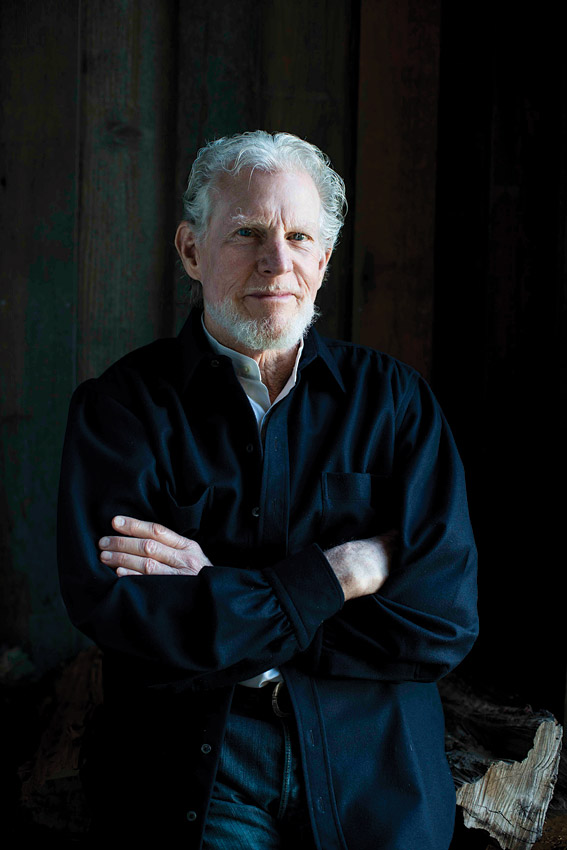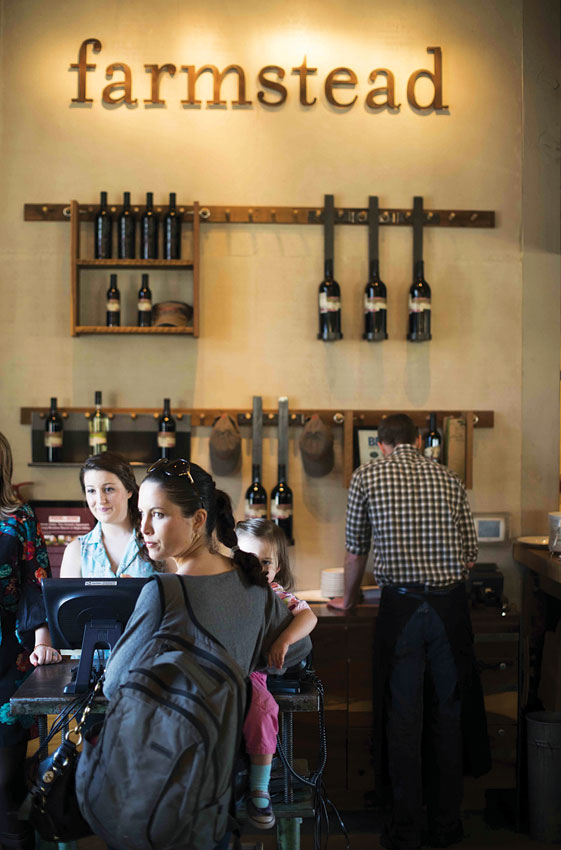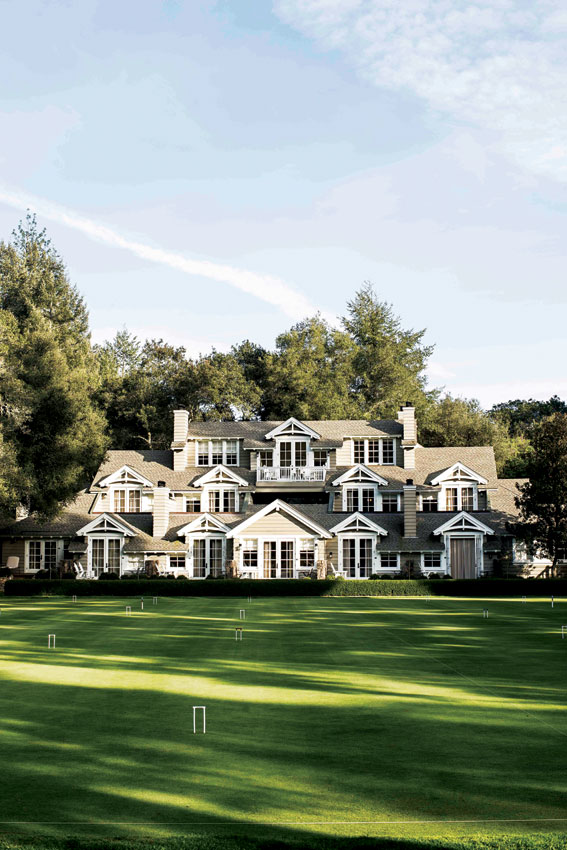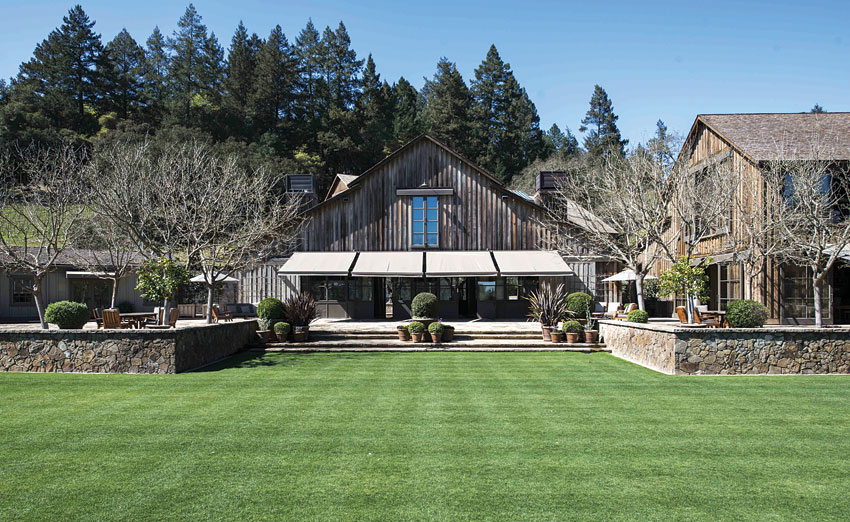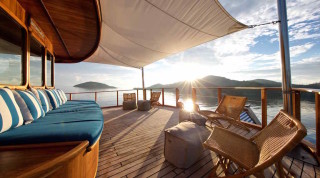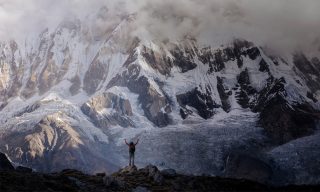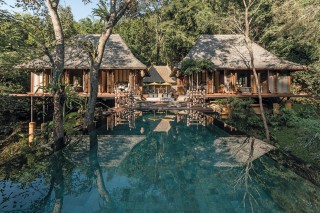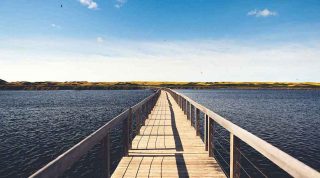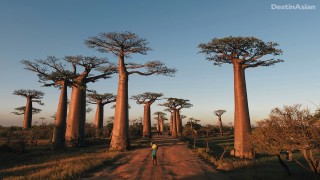At some point you have to stop and ask yourself: Why the Napa Valley? Why did the great late-20th-century wine revolution take place here and not somewhere else on the planet?
“It’s all about the soil, the geology, the diversity of the dirt beneath our feet,” says Kristie Sheppard, executive director of the Napa Valley Museum in Yountville. “This is an unbelievably fertile area. When European settlers first started coming here in the 1830s and ’40s, they planted some vines and they flourished.” In the late 1840s, gold was discovered about 160 kilometers east of here in the Sierra Nevada foothills. Napa was perfectly placed to supply wine to boomtowns like San Francisco and Sacramento, and its first wine boom followed.
Over the next century the wineries of Napa were devastated by floods, fires, phylloxera, and Prohibition. By the 1930s there were only a couple of operations left, making sacramental wine for Catholic churches; local farmers had turned to growing other crops like prunes. “Everyone was a prune picker in those days, even school kids,” Sheppard says.
The renaissance didn’t arrive until the late 1960s, when Robert Mondavi opened the first new winery to be built in the valley since before Prohibition. Bucking tradition, the prescient winemaker started marketing his vintages to people who didn’t normally drink wine, thereby creating a whole new audience for Napa’s precious nectar. “Together with the Judgment of Paris, that changed everything,” Sheppard says. In 1985, the valley attracted some half a million visitors; last year that number was five million, making Napa California’s second most popular tourist destination (after Disneyland). The number of wineries, meanwhile, has soared from a couple of dozen to more than 400.
On a busy summer or autumn weekend it can sometimes feel like there are five million cars moving up and down Highway 29 through the middle of the valley. But during my midweek visit in early spring, the roads are refreshingly empty, the local bars and restaurants mostly filled with locals. One of the first things I notice—other than the endless views of vineyards set against forested mountains—is how strikingly different the valley’s towns have become.
With its adorable, historic architecture, St. Helena is the prototypical wine-country village. Calistoga is like stepping back into the Wild West, a rough-edge town where people still ride horses up and down the main road. Yountville is an elegant mid-valley oasis, home to chic boutiques and restaurants such as the legendary French Laundry and former Food Network chef Michael Chiarello’s Bottega, Napa’s top Italian eatery. It’s so clean you could practically eat off the sidewalks. Napa City, at the southern end of the valley, was depressed and largely ignored a decade ago, but has since emerged as the hip new spot to hang out. No place better epitomizes the town’s revival than The Thomas restaurant, which took over an abandoned riverside building last year and now serves nuanced dishes such as grilled heritage pork chops with a pear-saffron glaze and Tuscan kale, artichoke chips with green garlic aioli sauce, and wild mushroom mousse with a homemade whiskey jelly and sourdough bread.
Indeed, food has emerged as the most compelling reason (other than wine) for visiting the valley. Napa has more Michelin-starred restaurants per capita than anywhere else in the U.S., and it’s the only place besides Manhattan with more than one three-star eatery.
One of those is The Restaurant at Meadowood resort. Tucked into a thickly wooded swath of countryside along the valley edge, the restaurant is renowned as much for an elegant and intimate dining experience as for the modern California cuisine that earned its Michelin stars. The prices are also legendary: the ever-changing chef’s tasting menu costs US$500 per person when the eight to ten courses are paired with local wines.
Christopher Kostow, the young cerebral chef who pilots Meadowood’s kitchen, thinks of the endeavor as a “grand stage” rather than just a restaurant, as well as a culinary expression of everything that makes the Napa Valley such an extraordinary place.
“We were able to do something really special here,” says Kostow. “The valley has everything at its disposal for a chef. Everyone here claims they use fresh ingredients. But there is a difference between farm-to-table and the desire to pursue a place specific type of cuisine. Obviously we try to grow most of our vegetables. But cooking something specific to a place is a life’s work. When you do that well, that’s really the voice of the place. Anyone can buy organic vegetables and serve farm-to-table. But to commit yourself to trying to understand those things and apply the resources to them . . . It’s a very lofty enterprise, a very ambitious one and a very challenging one. But in the end the product is very specific, very special.”

